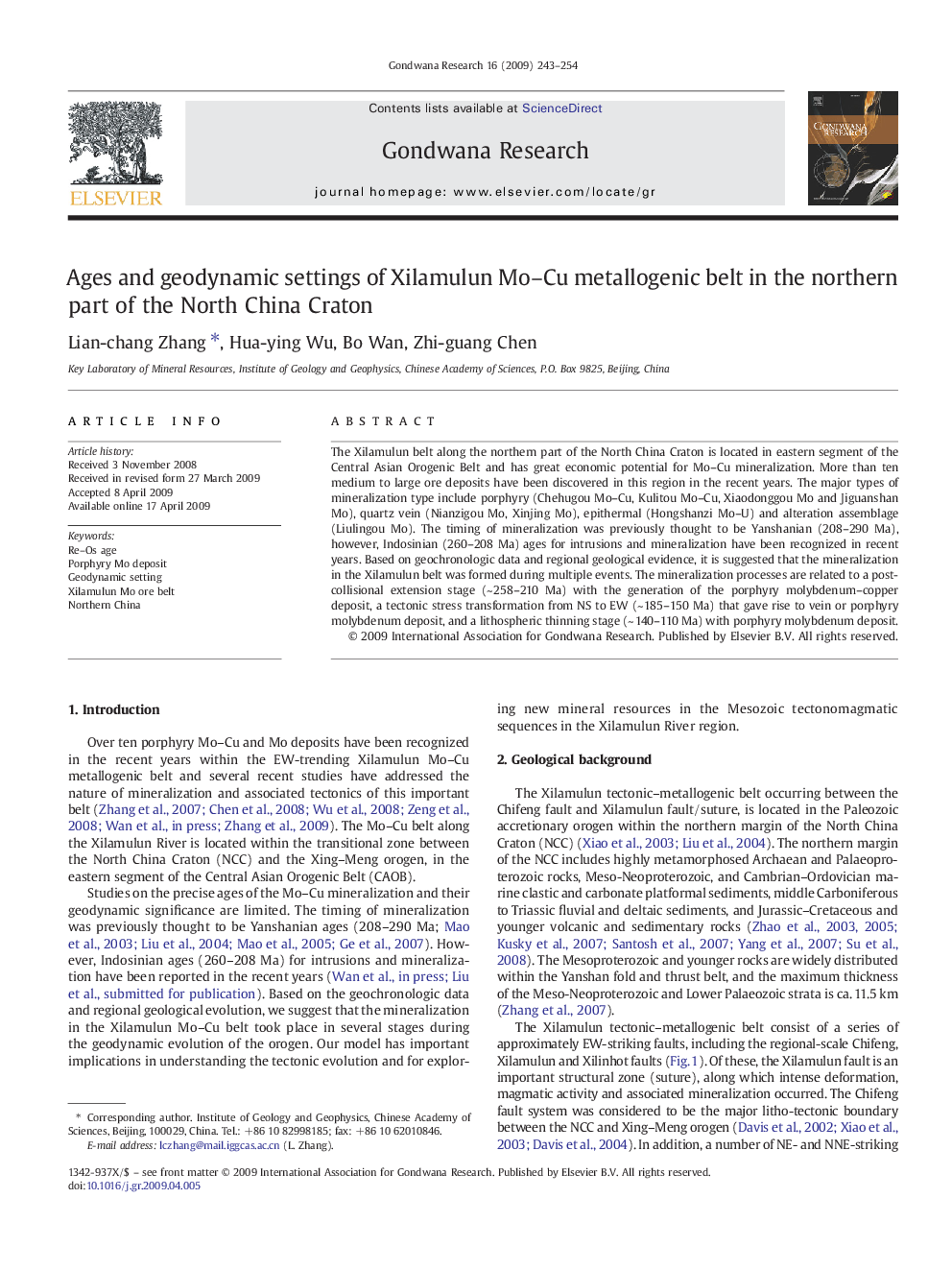| Article ID | Journal | Published Year | Pages | File Type |
|---|---|---|---|---|
| 4727484 | Gondwana Research | 2009 | 12 Pages |
The Xilamulun belt along the northern part of the North China Craton is located in eastern segment of the Central Asian Orogenic Belt and has great economic potential for Mo–Cu mineralization. More than ten medium to large ore deposits have been discovered in this region in the recent years. The major types of mineralization type include porphyry (Chehugou Mo–Cu, Kulitou Mo–Cu, Xiaodonggou Mo and Jiguanshan Mo), quartz vein (Nianzigou Mo, Xinjing Mo), epithermal (Hongshanzi Mo–U) and alteration assemblage (Liulingou Mo). The timing of mineralization was previously thought to be Yanshanian (208–290 Ma), however, Indosinian (260–208 Ma) ages for intrusions and mineralization have been recognized in recent years. Based on geochronologic data and regional geological evidence, it is suggested that the mineralization in the Xilamulun belt was formed during multiple events. The mineralization processes are related to a post-collisional extension stage (~ 258–210 Ma) with the generation of the porphyry molybdenum–copper deposit, a tectonic stress transformation from NS to EW (~ 185–150 Ma) that gave rise to vein or porphyry molybdenum deposit, and a lithospheric thinning stage (~ 140–110 Ma) with porphyry molybdenum deposit.
